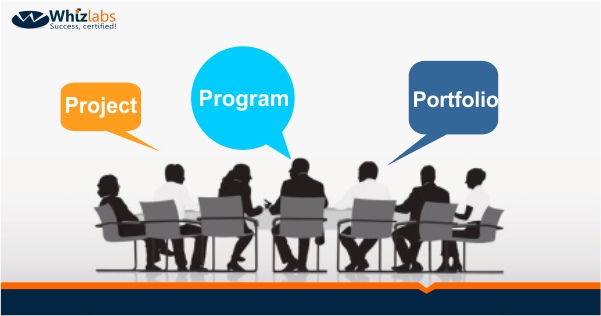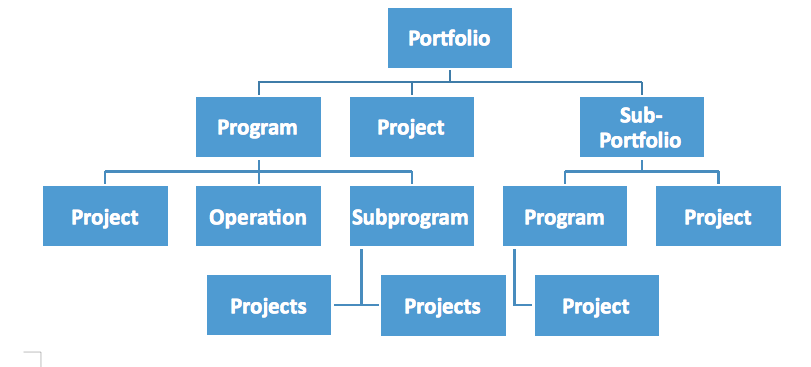What is a Project?
Scenario: Suppose your boss comes to you in morning and said “There is some issue in the system, can you check what is wrong with this and fix it?” Is this is a project?
No, because if you don’t know what has to be done, if you don’t know what is wrong then how can you fix it. To know what the project is you have to see the characteristics of a project.
- A TEMPORARY Endeavor
- Created a UNIQUE product or service or result.
- UNIQUE means deliverables are different in nature and may be tangible or intangible.
- DEFINITE beginning and ending.
- The end is reached when the project objectives have been achieved or when the project is terminated because its objective will not or cannot be met, or when the need for the project no longer exits.
- PROGRESSIVELY ELABORATED (Proceeding in steps).
- Divided in several PHASES for better management and control.
- Completion of one or more deliverables marks the project phase.
- Project Deliverables are formally accepted by customer at phase end.
Example of Projects
- Developing a new product, service or result.
- Developing a new software program.
- A result, such as an outcome or document (Research projects)
- Constructing a building.
- Ongoing operations (or Processes)
What is not a Project?
- Ongoing operations (or Processes)
Note: If you know the definition of the project, this will helps you to get 2-4 questions right in the examination.
What is a Program?
A program is a group of projects that are closely linked, to the point where managing them together provides some benefits. Projects and programs are often dependent on each other. Program management focuses on these dependencies.
A group of related projects managed in a coordinated way to obtain benefits and control not available from managing them individually. Programs may include elements of related work outside scope of the discrete projects in the program. Program is collection of initiatives and projects that are designed to accomplish a strategic business objective.
[restrict]
Programs include
- A single product or deliverable
- Many product deliverables
- Can be a combination of ongoing support activity in addition to deliverables
- Usually focuses on business objectives and delivering value
- Benefit management
Characteristics of Programs
- Deliverables with a strategic intent
- Business Change
- Significant change in the organization
- Success criteria including growth, productivity gains, and improvement in the market
- There are significant risks
- Environmental change as well as change in program
- Longer in duration than projects
- Benefits are achieved throughout duration of program
- Programs have larger scope than projects and typically run at higher levels in the organization
- Strategic initiatives are linked to programs
- Programs require more sophisticated approach to managing change and navigating politics
- The external environment is important to understand and monitor since it impacts program success
Key Points
What is Portfolio?
A portfolio is a group of projects or programs that are linked together by a business goal. If an architectural firm was venturing into remodeling existing building as well as designing new ones, they might split their firm’s effort into separate new construction and remodeling portfolios since the goal for each is quite different.
Portfolio Management refers to centralized management of one or more portfolios. It focuses on ensuring that projects and programs are reviewed to prioritize resource allocation and that the management of the portfolio is consistent with and aligned to organizational strategies.
A portfolio exits to achieve one or more organizational strategies and objectives and may consist of set of past, current and planned or future portfolio components.
Portfolio Includes
- Be representative of investments made or planned by organization.
- Be aligned with the organizations goal and objectives.
- Have some common features that permit the organization to group them for effective management.
- Have the ability to quantifiable and therefore, can be measured, ranked and prioritized.
- Share and compete for organizational resources.
The relationship among Project, Program and Portfolio
Main difference between Projects, Program and Portfolio
|
Projects |
Program |
Portfolio |
| Projects have a narrow scope with specific deliverables. | Programs have a wide scope that may have to change to meet the benefit expectations of the organization. | Portfolios have a business scope that changes with strategic goals of the organization. |
| The Project manager tries to keep change to a minimum. | Program Managers have to expect change and even embrace it. | Portfolio managers continually monitor changes in the broad environment. |
| Success is measured by budget, on time, and product delivered to specification. | Success is measured in terms of ROI, new capabilities, and benefit delivery. | Success is measured in terms of aggregate performance of portfolio component. |
| Leadership style focuses on task delivery and directive in order to meet the success criteria. | Leadership style focuses on managing relationships, and conflict resolution. Program manager’s need to facilitate and manage the political aspects of the stakeholder management. | Leadership style focuses on adding value to portfolio decision making. |
| Project Manager manages technicians, engineers and specialist etc. | Program Manager manages project managers. | Portfolio managers may manage or coordinate portfolio management staff. |
| Project Managers are team players who motivate using their skills and knowledge. | Program Managers are leaders providing vision and leadership. | Portfolio managers are leaders providing insight and synthesis. |
| Project Managers conduct detailed planning to manage the delivery of the project. | Program Manager creates high level plans providing guidance to projects where detailed plans are created. | Portfolio managers create and maintain necessary process and communication relative to aggregate portfolio. |
| Project managers monitor and controls tasks and the work of producing the projects products. | Program manager monitor projects and ongoing work through governance structure. | Portfolio manager monitor aggregate performance and value indicators. |
High Level View of Portfolio, Program and Projects
Questions & Answers
- Which of the following is NOT true about Portfolio Management?
- The portfolio manager judge successes of the portfolio by combining data from all of its program and projects.
- A portfolio can contains projects and programs.
- A portfolio is organized around a business goal
- A portfolio is always a group of programs
Correct Answer: D
- Which of the following is NOT a characteristic of a Project?
- A. Temporary
- B. Strategic
- C. Specifically result
- D. Progressively elaborated.
Correct Answer: C
- The project manager for a construction project discovers that a new water line is being created in the neighborhood where he’s managing a project. Company policy requires that a series of forms for city environmental changes need to be filled out before his team can continue work on the project. This is an example of:
- A. A Portfolio
- B. A Program
- C. An Enterprise environmental Factor
- D. A Project
Correct Answer: C
- An energy company is investing in a series of initiatives to look for alternative energy sources so that the company can be competitive in 10 years. The initiatives are tracked and managed together because this goal is vital to the success of the company. This is an example of…
- A. A Portfolio
- B. A Program
- C. A Project
- D. An Enterprise environmental factor.
Correct Answer: A
- Which of the following is NOT an example of operational work?
- A. Building a purchase order system for accounts payable
- B. Submitting weekly purchase orders through a purchase order system
- C. Deploying weekly anti-virus software updates
- D. Yearly staff performance evaluations
Correct Answer: A . It’s a temporary effort and a unique result.
Take a Free Demo of Whizlabs PMP Offerings:
PMP Exam Questions
PMP Online Training (with full length videos)
PMP Live Virtual Classroom Training
- What are Scrum roles and why it’s needed? - August 12, 2017
- Stakeholder Analysis – Is it required? - July 28, 2017
- Project Manager – An integrator, how? - July 28, 2017
- Different PMI Certifications – Which one to choose? - July 28, 2017
- What is the importance of Change Management in Project Management? - June 23, 2017
- What’s important to know to build a career in Agile? - June 23, 2017
- Agile Basics, Manifesto & Principles - June 23, 2017
- Scrum – Is it mandatory to learn in today’s IT market? - June 2, 2017



